3D-printed prosthesis boosts odds of survival for cancer-stricken hornbill at Jurong Bird Park
Sign up now: Get ST's newsletters delivered to your inbox
Toh Ting Wei
Follow topic:
SINGAPORE - A great pied hornbill with an aggressive form of cancer at the Jurong Bird Park received a survival boost after a 3D-printed prosthesis was fitted on top of his bill.
The hornbill was given a 46g prosthetic casque on Sept 13 after an operation to remove a cancerous growth in his natural casque, said park operator Wildlife Reserves Singapore (WRS) in a statement on Wednesday (Oct 3).
The casque refers to the helmet-like structure on the beak of a hornbill.
Veterinarians had carefully cut and removed part of the bird's natural casque to scrape off the cancerous tissue within it, before the prosthetic casque was put in place.
The prosthesis protects the operation wound from being exposed and gives the hornbill's natural casque time to regrow, a process that can take up to a year.
The 22-year-old bird's new appearance has earned him the name Jary, which means a warrior with a helmet in ancient Norse.
He is currently recuperating under close observation at Jurong Bird Park's Avian Hospital's outdoor ward and will remain there until the end of October.
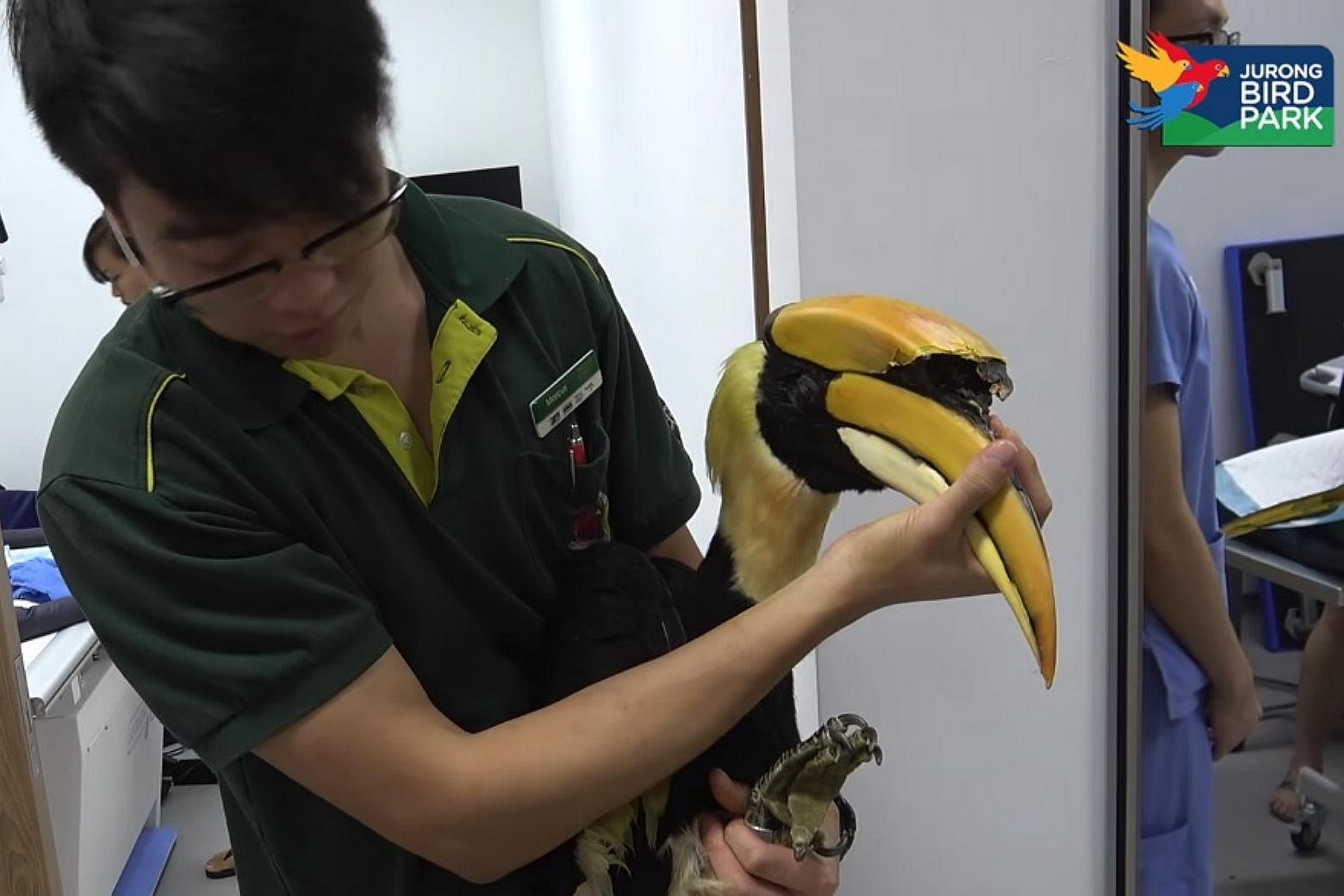
Great pied hornbills are classified as near threatened in the International Union for Conservation of Nature's Red List of Threatened Species, and can live up to 40 years on average.
Jary was diagnosed with cancer in July, after keepers noticed that he had an estimated 8cm-wide gash on his casque that exposed the underlying tissue.
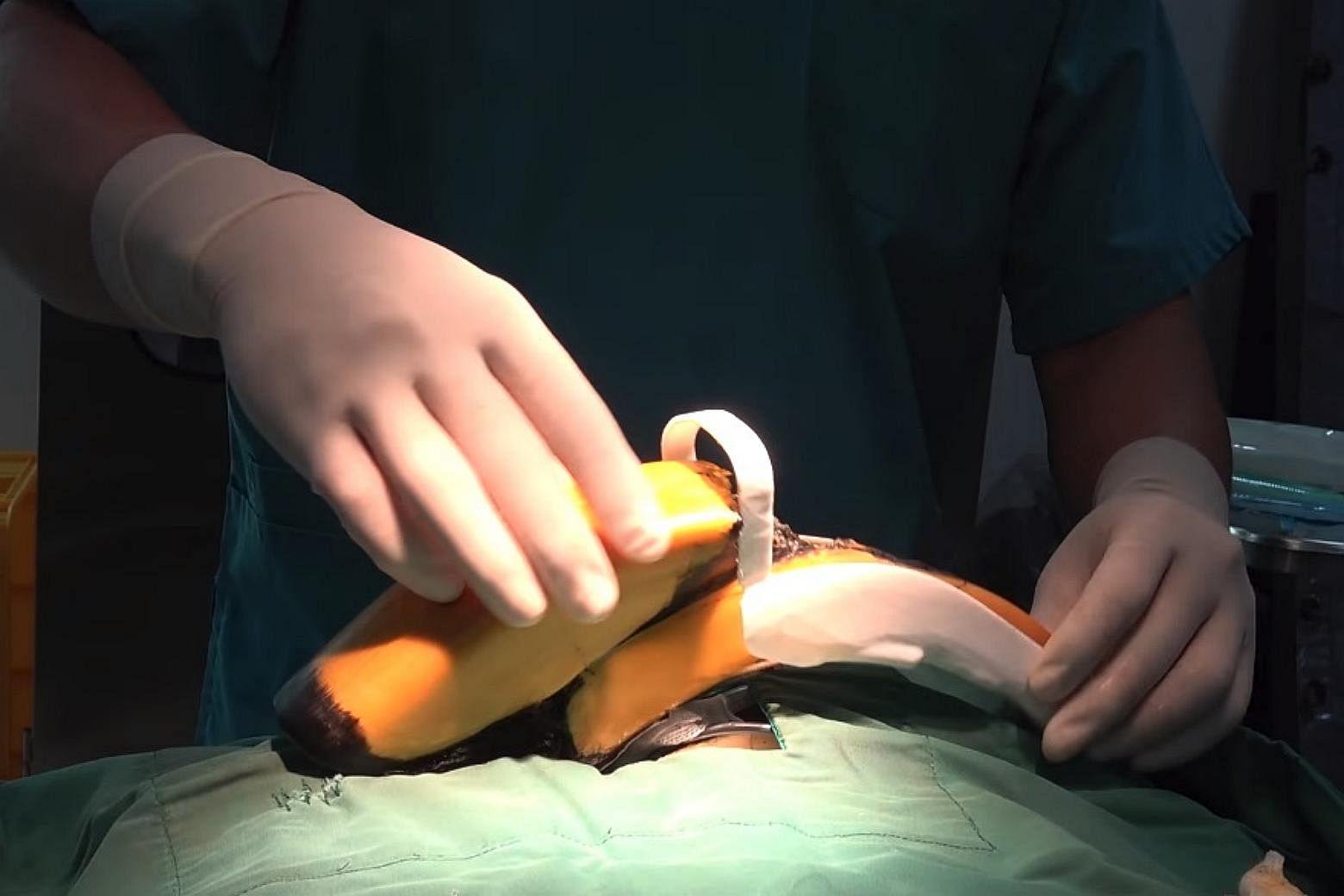
Two hornbills in the park had a similar cancer in the past. One succumbed to the disease despite undergoing chemotherapy, while the other hornbill's cancer progressed too rapidly for treatment and the bird later died.
Jary's unlikely shot at survival came as a result of a collaboration between the park's veterinary team, the Keio-National University of Singapore (NUS) Connective Ubiquitous Technology for Embodiments Centre, the NUS Smart Systems Institute, the NUS Centre for Additive Manufacturing and The Animal Clinic.
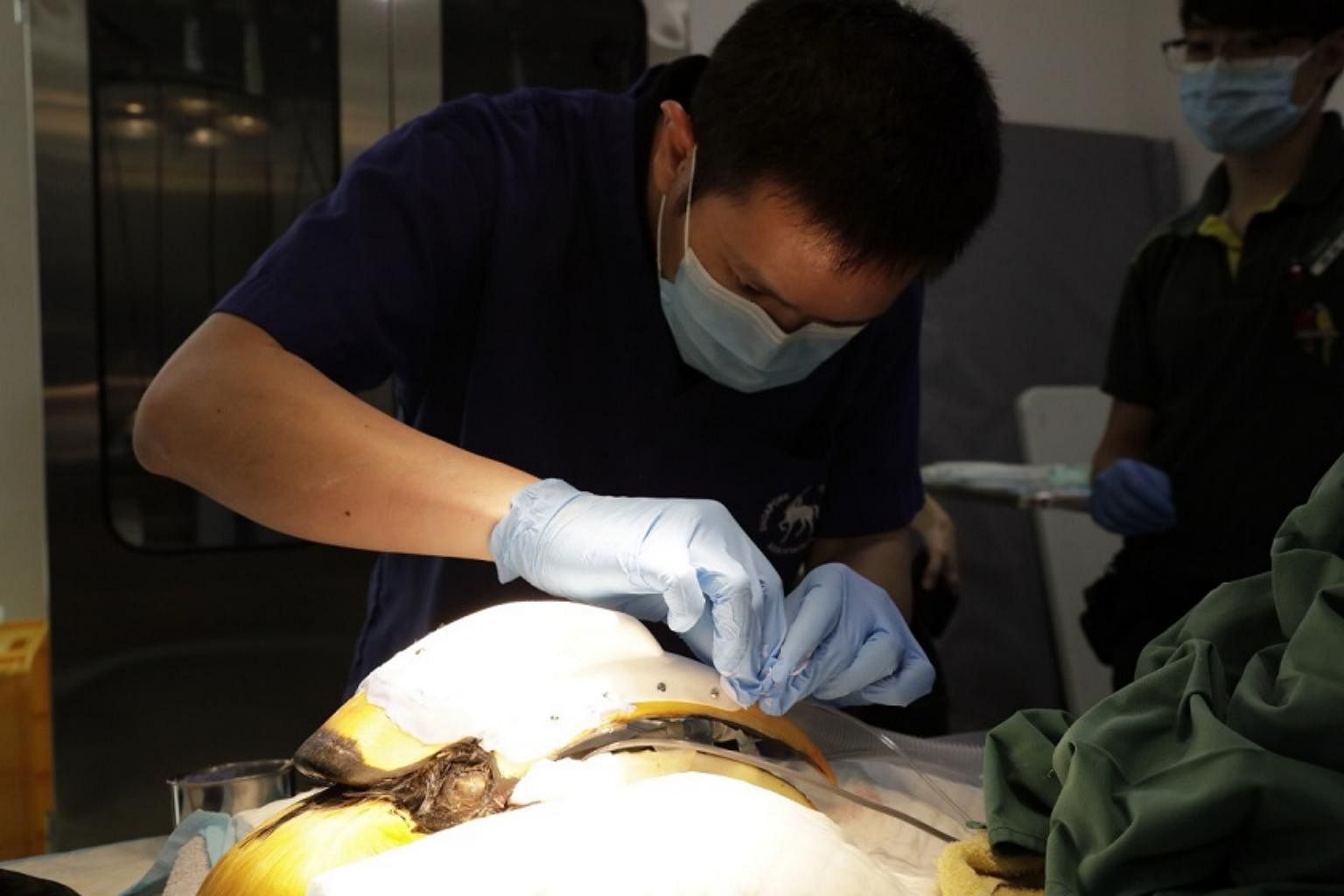
The three NUS-linked organisations contributed their 3D-printing capabilities, while honorary consultant, Dr Hsu Li Chieh, from The Animal Clinic, was roped in to assess 3D prosthetic models for the bird.
It took almost two months of designing and discussions before a model was deemed a perfect fit for the hornbill.
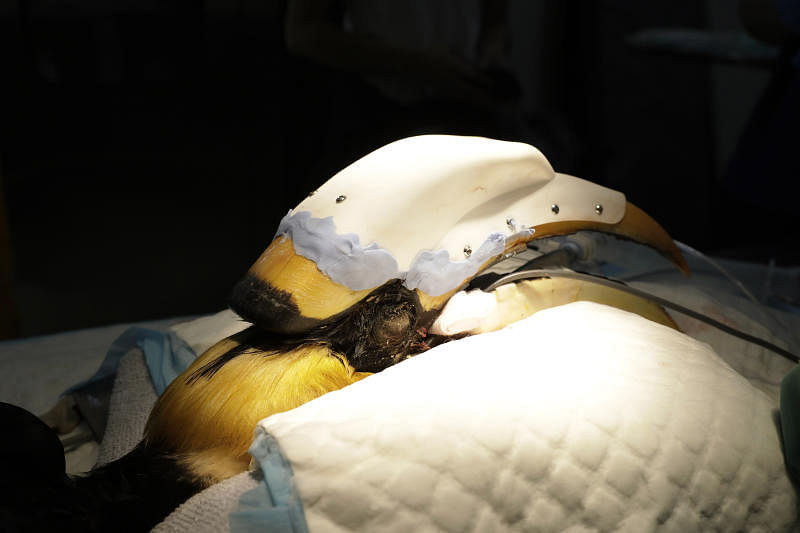
The great pied hornbill was fitted with a prosthetic casque after an operation to remove cancerous tissue from its natural casque. Resin was applied around the casque to seal any gaps.
PHOTO: WILDLIFE RESERVES SINGAPORE
Dr Xie Shangzhe, assistant director of conservation, research and veterinary services at WRS, said: "This case is a great example of how veterinarians and engineers can work together to utilise science and technology for the treatment of diseases such as cancer in all species, including birds.
"Together, we achieved the best possible outcome."
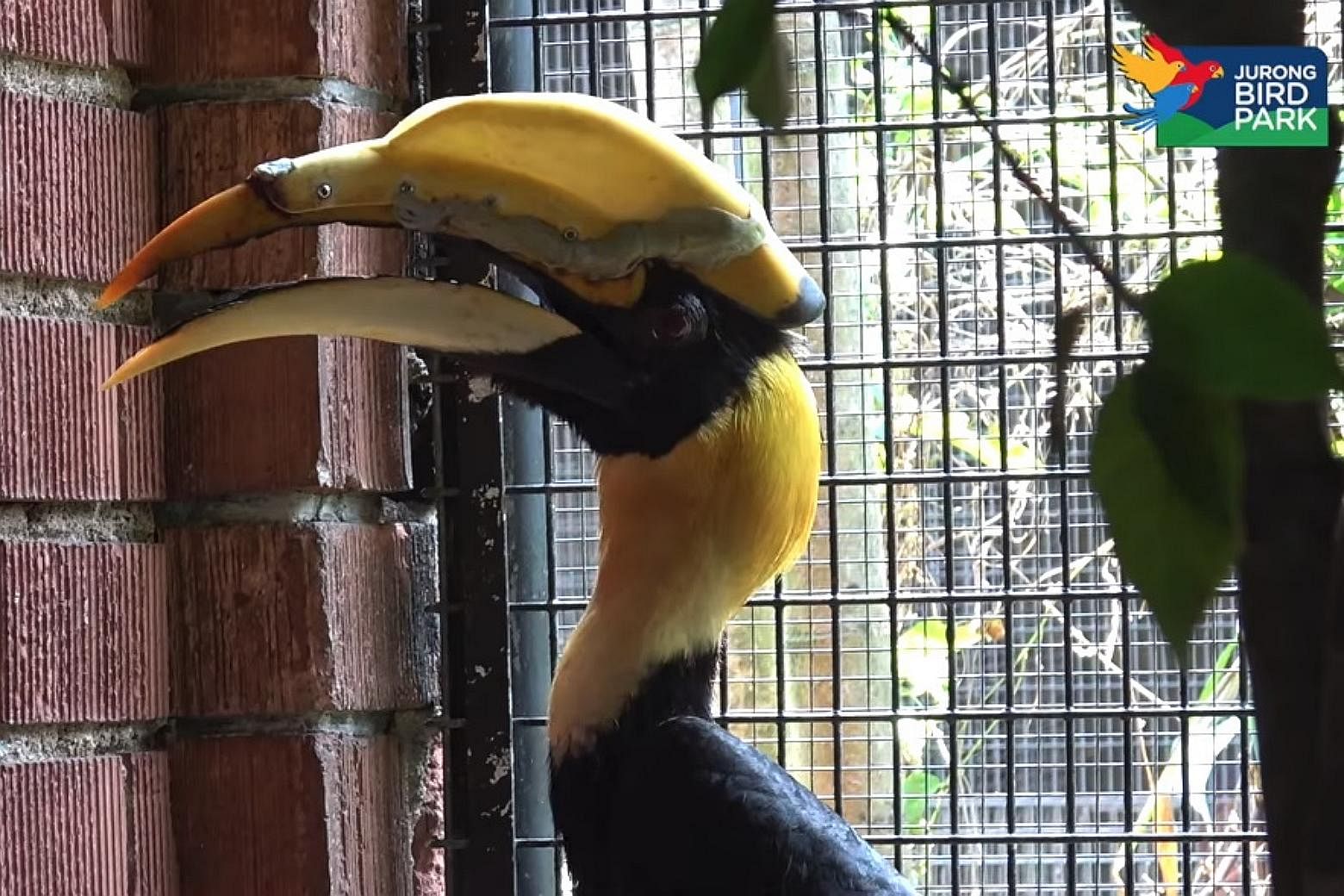
WRS said that the plan had required some specialist veterinary intervention as well as some high-tech engineering gadgetry in order to perform surgical resection of the casque, and to replace it with a 3D prosthesis.
Jary started eating normally the day after the surgery, and recently began colouring his prosthetic casque yellow. This is done when the bird rubs the casque on his preening glands, which secrete a yellow pigment.
"These natural behaviours are good indications that he has accepted the prosthesis as part of him," said Dr Xie.
Jurong Bird Park currently houses four male and six female great pied hornbills.

